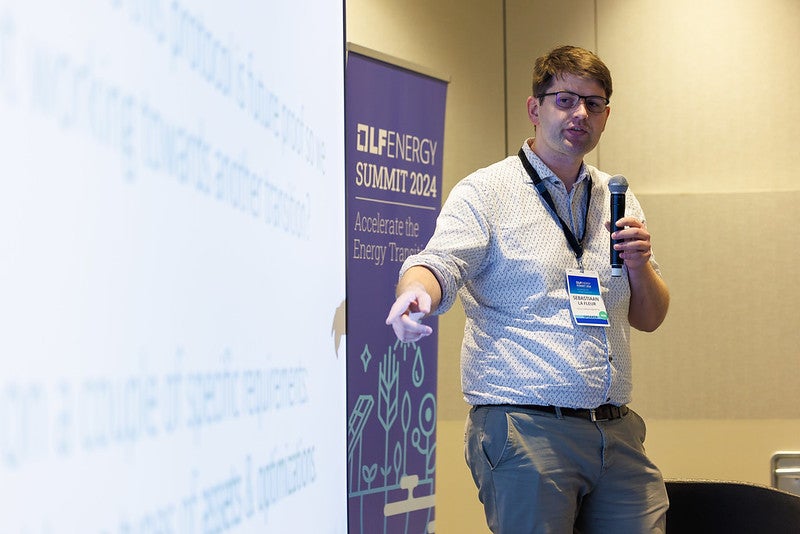LF Energy Summit Recap and Video: Future-Proof Protocol for Energy Flexibility
At the 2024 LF Energy Summit in Brussels, Sebastiaan la Fleur from la Fleur Software Engineering delivered an insightful lightning talk titled “Future-Proof Protocol for Energy Flexibility.” As the world moves towards decarbonization and increased reliance on distributed energy resources (DERs), ensuring that communication protocols between energy assets and optimization systems are adaptable to future developments is essential. La Fleur highlighted key aspects of this challenge and compared existing protocols to illustrate their strengths and limitations. Here’s a breakdown of the most important takeaways from his session (full video follows at the end).
1. The Role of Energy Flexibility Protocols
Energy flexibility refers to the ability of distributed energy assets—such as heat pumps, batteries, and smart appliances—to adjust their energy consumption or production based on signals from an optimization engine. For this system to work effectively, the energy assets and optimization engines need to communicate seamlessly. Protocols enable this communication, ensuring that energy flexibility is both possible and efficient.
2. Current Protocol Options: EEBus and S2
La Fleur introduced two prominent energy flexibility protocols: EEBus and S2. Both are European-focused and take different design approaches to standardization.
- EEBus (popular in Germany) organizes its structure into tiers:
- SHIP ensures secure, basic communication.
- SPINE is a generic data model used to describe energy assets and define optimization goals.
- Use cases specify particular tasks such as limiting power consumption or optimizing self-consumption.
- S2 (from the Netherlands) defines generic device types rather than focusing on specific use cases. This allows for greater flexibility, as different assets can be described through common attributes, making it more adaptable for future energy assets.
3. Device Types in the S2 Protocol
S2’s approach focuses on device types rather than optimization goals. Examples include:
- Fill-based control: Used for assets with energy storage, such as batteries or thermal systems.
- Power profile-based control: For devices with predefined execution plans (e.g., washing machines).
- Demand-driven control: For devices where a demand profile needs to be met, like hybrid heat pumps.
These device types allow for flexible modeling of energy assets, making S2 more resilient to changes in the energy landscape.
4. Future-Proofing Energy Flexibility Protocols
A major part of la Fleur’s talk focused on future-proofing these protocols. He identified two key challenges:
- Introducing new assets: In EEBus, new use cases may require protocol updates, while S2’s generic device types reduce the need for such changes.
- Adapting to new optimization goals: EEBus protocols are built around predefined optimization goals, meaning updates are needed when new markets or goals arise. S2, on the other hand, is less dependent on optimization goals, making it more adaptable.
5. The Importance of Open Standards and Interoperability
La Fleur emphasized that it’s not enough for protocols to be open; the entire system surrounding them must also be open to ensure true interoperability. He highlighted the potential problem of manufacturers using proprietary communication methods with their data centers, which can lead to lock-ins and monopolization of the communication channels. This issue undermines the openness of the system, as end-users may not have the flexibility to choose which energy management system to use.
